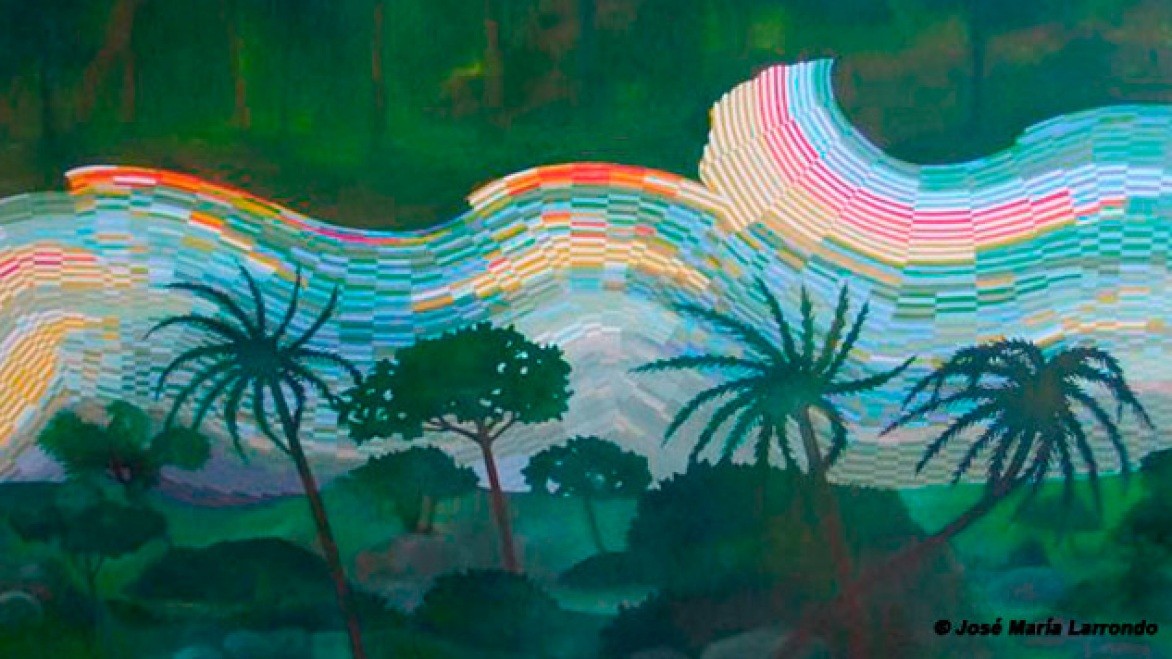José María Larrondo's Book of Hours
20 Nov 2015 - 10 Jan 2016
JOSÉ MARÍA LARRONDO'S BOOK OF HOURS
20 November 2015 - 10 January 2016
This exhibition examines Larrondo's recent output and attempts to resituate his oeuvre in the context of the current revival of painting, while also underscoring the merits of the work he has been doing, without concessions to changing fashions and market demands, since the 1980s.
José María Larrondo's early career was linked to the new figuration movement in Seville, where he stood out for his personal, unclassifiable style. He has managed to combine the weight and solid reality of the canvas—a lesson drawn from the modern emphasis on the supporting cloth and its surface—with the magic of trompe l'oeil, the symbolic ability of painting to trick the eye, perturb the mind and make us wonder what is fake and what is real, in both the picture and in life. Even so, Larrondo has never turned away from figuration—as Michel Hubert Lépiouche accurately noted, the Baroque is also a major influence in his work—and his conceptual, polysemic painting lends itself to multiple interpretations.
With this brilliant blend of matter and concept, the artist draws spectators into his game and invites them to reflect on today's reality, addressing such universal themes as violence, power and religion as well as other, more specific questions that have to do with human nature or personal experiences. This game of metaphors links his oeuvre to the literary realm, for his is a narrative practice. In Larrondo's works the title builds on the image, and the combination of the two—what each one contributes—offers enigmas instead of assertions, polysemy in lieu of unequivocal messages. Logically, the catalogue is also unusual and unexpected, another game of suggestions that adds new paths to those already branching out from each painting.
The publication accompanying the exhibition contains an essay by the curator, José Guirao, and the contributions of thirty writers (including Antonio Gamoneda, Soledad Puértolas, Alfredo Taján, Antonio Lucas, Estrella de Diego, Bárbara Jacobs and Javier Montes). Each has interpreted, in a free-form text, one of the paintings featured in the show.
20 November 2015 - 10 January 2016
This exhibition examines Larrondo's recent output and attempts to resituate his oeuvre in the context of the current revival of painting, while also underscoring the merits of the work he has been doing, without concessions to changing fashions and market demands, since the 1980s.
José María Larrondo's early career was linked to the new figuration movement in Seville, where he stood out for his personal, unclassifiable style. He has managed to combine the weight and solid reality of the canvas—a lesson drawn from the modern emphasis on the supporting cloth and its surface—with the magic of trompe l'oeil, the symbolic ability of painting to trick the eye, perturb the mind and make us wonder what is fake and what is real, in both the picture and in life. Even so, Larrondo has never turned away from figuration—as Michel Hubert Lépiouche accurately noted, the Baroque is also a major influence in his work—and his conceptual, polysemic painting lends itself to multiple interpretations.
With this brilliant blend of matter and concept, the artist draws spectators into his game and invites them to reflect on today's reality, addressing such universal themes as violence, power and religion as well as other, more specific questions that have to do with human nature or personal experiences. This game of metaphors links his oeuvre to the literary realm, for his is a narrative practice. In Larrondo's works the title builds on the image, and the combination of the two—what each one contributes—offers enigmas instead of assertions, polysemy in lieu of unequivocal messages. Logically, the catalogue is also unusual and unexpected, another game of suggestions that adds new paths to those already branching out from each painting.
The publication accompanying the exhibition contains an essay by the curator, José Guirao, and the contributions of thirty writers (including Antonio Gamoneda, Soledad Puértolas, Alfredo Taján, Antonio Lucas, Estrella de Diego, Bárbara Jacobs and Javier Montes). Each has interpreted, in a free-form text, one of the paintings featured in the show.


